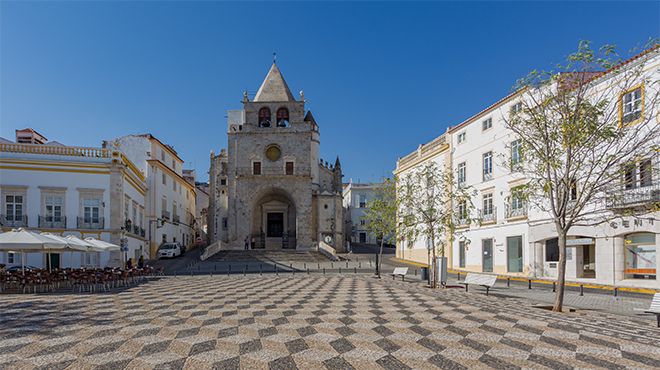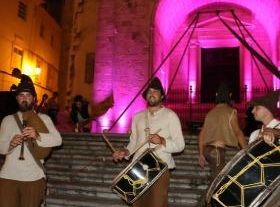Igreja de Nossa Senhora da Assunção - Elvas

Monuments
A fortress church on the country’s border.
The construction of the church then called Our Lady of the Square started in 1517 following the guidelines of the royal architect Francisco de Arruda, who worked at the Amoreira Aqueduct to supply drinking water to the fortified city on the Spanish border. In the same spot, the church of Santa Maria dos Açougues had been erected.
The new temple finally opened to worship in 1537 but work continued until the end of the century under the guidance of master mason Diogo Mendes. It became the main axis on which the city’s entire historical centre was based. The mastery of Francisco de Arruda gave rise to a majestic fortress-like building, which bears a bell tower at the apex of the facade and is surmounted by bevelled battlements. The main portal was designed by Miguel de Arruda, commissioned by Cardinal D. Henrique.
In 1570, with the creation of the bishopric of Elvas by Pope Pius V, the church of Our Lady of the Square was transformed into Elvas Cathedral, dedicated to Our Lady of the Assumption. In artistic terms, it is originally Manueline in style, but has lost some of those features over the centuries due to the changes introduced by the successive bishops of the city.
Inside, the entire body of the church is encased by a backdrop of polychrome tiles, ordered by Bishop António de Matos de Noronha in the early 17th century. The chapel, in marbles of various colours and baroque in style, was built in 1734 and is undersigned by José Francisco de Abreu. Also worthy of special mention is the superb organ in the choir which was commissioned in 1762 by bishop D. Lourenço de Lencastre to the Italian organist Pasqual Caetano Oldoni, and completed in 1777.
The church continued to function as a Cathedral until 1881, when it lost its Episcopal classification and the seat of the bishopric was transferred to Évora.
7350-126 Elvas
- Partial
- Total





 Explore
Explore 
 Remember and Share
Remember and Share 


